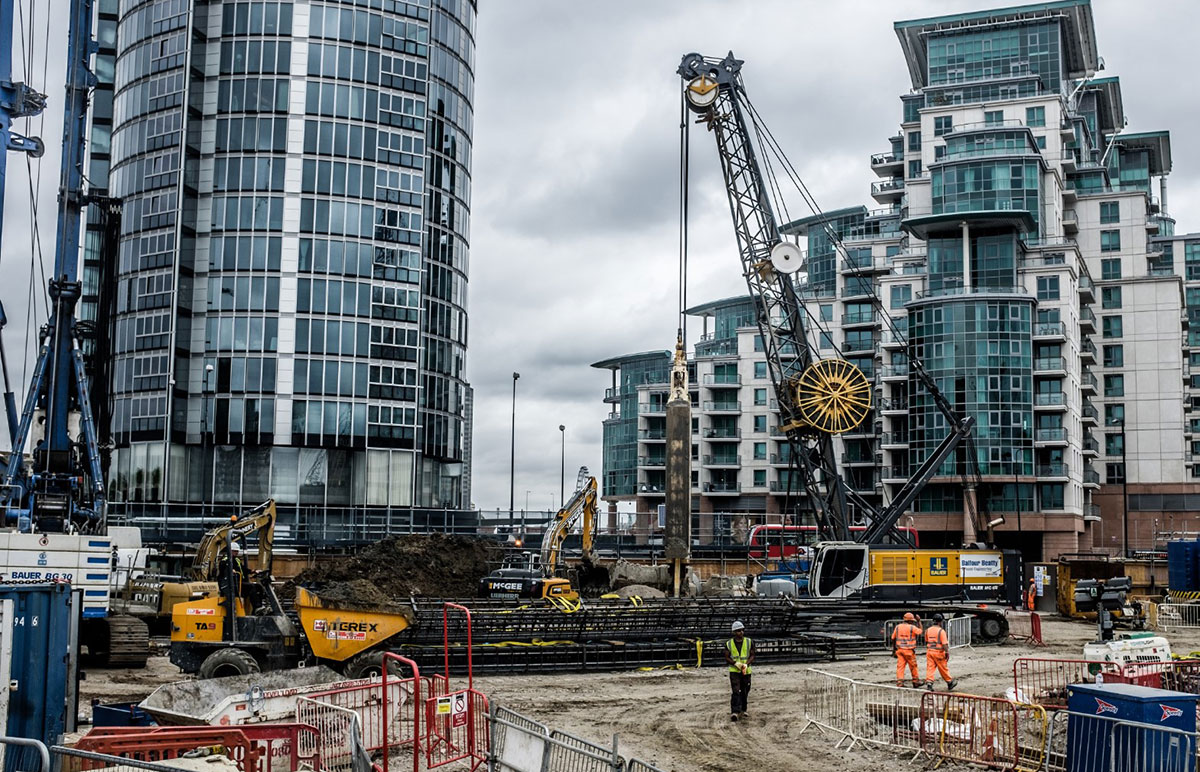Little Known Questions About Geotheta.
Table of ContentsGeotheta for BeginnersThe smart Trick of Geotheta That Nobody is Talking AboutNot known Details About Geotheta The Definitive Guide for GeothetaSome Ideas on Geotheta You Need To Know

They carry out site examinations, accumulate samples, execute laboratory tests, and assess data to examine the viability of the ground for construction projects - Geo Tech Engineer. Based upon their findings, geotechnical engineers supply suggestions for structure style, slope stability, keeping structures, and reduction of geotechnical risks. They team up with various other experts, such as engineers, architectural engineers, and construction teams, to make certain that geotechnical considerations are integrated into the overall project layout and execution
By assessing the habits and buildings of dirt and rock, they can identify potential geotechnical hazards such as landslides, dirt negotiation, or slope instability. Their know-how aids protect against failings or mishaps that can jeopardize lives and property. Below are some in-depth responsibilities and duties of a geotechnical designer: Site Investigation: Geotechnical engineers conduct website examinations to collect data on subsurface conditions.
They interpret the information to recognize the residential or commercial properties and actions of the soil and rock, including their strength, leaks in the structure, compaction characteristics, and groundwater conditions. Geotechnical Evaluation and Design: Geotechnical engineers examine the data accumulated throughout site examinations to evaluate the security and viability of the site for building and construction jobs. They do geotechnical computations and modeling to examine aspects such as birthing capability, settlement, slope stability, lateral earth stress, and groundwater circulation.
How Geotheta can Save You Time, Stress, and Money.
Structure Layout: Geotechnical designers play an essential duty in creating foundations that can securely support the intended framework. They evaluate the soil problems and tons requirements to establish the proper foundation kind, such as superficial foundations (e.g., footings), deep foundations (e.g (https://allmyfaves.com/geotheta?tab=Geotheta)., heaps), or specialized techniques like soil enhancement. They take into consideration elements such as settlement limits, birthing ability, and soil-structure interaction to develop optimum structure layouts
They examine building plans, display site tasks, and carry out field assessments to confirm that the design recommendations are adhered to. If unpredicted geotechnical problems arise, they analyze the circumstance and offer recommendations for removal or modifications to the design. Risk Assessment and Reduction: Geotechnical designers evaluate geotechnical hazards and threats connected with the job website, such as landslides, liquefaction, or dirt erosion.

Collaboration and Communication: Geotechnical designers work closely with various other experts associated with a task, such as engineers, architectural designers, and building and construction groups. Effective communication and cooperation are necessary to incorporate geotechnical factors to consider right into the overall project style and construction procedure. Geotechnical engineers supply technical knowledge, solution questions, and make sure that geotechnical needs are met.
All about Geotheta
Below are some kinds of geotechnical engineers: Structure Engineer: Structure engineers concentrate on creating and evaluating foundations for frameworks. They examine the soil conditions, tons demands, and site features to establish the most suitable foundation type and layout, such as shallow foundations, deep foundations, or specialized techniques like stack foundations.
They review the aspects affecting incline stability, such as soil residential or commercial properties, groundwater conditions, and incline geometry, and develop methods to stop incline failings and alleviate threats. Quake Designer: Earthquake engineers specialize in assessing and making structures to stand up to seismic pressures. They evaluate the seismic threat of a website, review soil liquefaction potential, and create seismic design standards to make sure the safety and resilience of frameworks throughout earthquakes.
They do field testing, accumulate samples, and analyze the accumulated data to characterize the dirt residential or commercial properties, geologic developments, and groundwater conditions at a website. Geotechnical Instrumentation Designer: Geotechnical instrumentation designers concentrate on surveillance and determining the habits of soil, rock, and structures. They set up and preserve instrumentation systems that monitor elements such as soil settlement, groundwater degrees, slope activities, and architectural displacements to assess efficiency and supply early cautions of prospective concerns.
The 2-Minute Rule for Geotheta
They carry out tests such as triaxial tests, combination examinations, direct shear examinations, and leaks in the structure tests to gather data for geotechnical evaluation and design. Geosynthetics Designer: Geosynthetics engineers focus on the style and application of geosynthetic materials, such as geotextiles, geogrids, and geomembranes. They make use of these products to improve soil security, strengthen have a peek at these guys inclines, provide drainage options, and control disintegration.
They tend to be investigative people, which indicates they're intellectual, reflective, and curious. They are interested, methodical, reasonable, logical, and sensible. Several of them are also social, indicating they're kind, generous, cooperative, individual, caring, handy, empathetic, skillful, and pleasant. Does this noise like you? Take our free job examination to learn if geotechnical designer is just one of your leading career suits.
In the office environment, geotechnical designers make use of specialized software application tools to perform calculations, create designs, and evaluate data. They prepare reports, review task specs, interact with customers and group members, and coordinate project activities. The office setup supplies a conducive setting for research study, analysis, and cooperation with various other experts associated with the task.
What Does Geotheta Do?
They frequently see project websites to conduct website investigations, analyze geotechnical conditions, and collect information for analysis. These brows through include taking a trip to different places, sometimes in remote or challenging surfaces. Geotechnical designers may carry out dirt sampling, conduct examinations, and monitor building and construction tasks to ensure that the geotechnical elements of the job are being implemented properly.
Geotechnical designers additionally function in specialized geotechnical research laboratories. Geotechnical laboratory designers function thoroughly in these atmospheres, taking care of screening tools, running tools, and videotaping information.